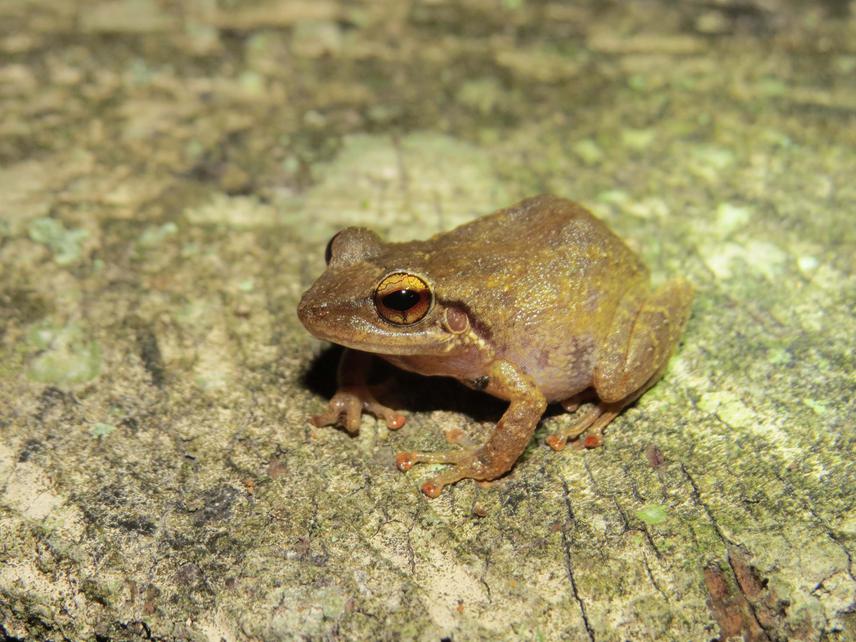Jimmy Barrantes-Madrigal
Other projects
Generate useful information for the proper management of the introduced frog Eleutherodactylus coqui in Costa Rica

Commun Coqui Frog found in Turrialba.
The invasive species represent one of the main causes of loss of biodiversity at the global level. This species can change the ecological dynamics at multiple levels and scales, their impacts on the ecosystem range from altering the regimes of fire, water quality and biogeochemical cycles to cause local extinctions of native species and changes in the structure of entire communities. An example of this is the case of the Common Coqui Frog (Eleutherodactylus coqui). This species was introduced in Hawaii at the end of the 80´s, and since then it has caused several alterations in the ecosystem.
In Costa Rica, the first published report of the presence of this species was in 2009 and since then there have been no studies of the status of their populations. The spread of this species is of special concern due to the fact that the locality where was reported is located near several protected areas.
Costs associated with the management of invasive species are always very high, both economically and environmentally. The best strategy is to perform actions as soon as possible prior to the species spread to a larger area. However, in order to implement appropriate strategies it is necessary to have the basic information about the status of the species and its possible impacts in the ecosystem.
The aim of this project is to provide useful information for the proper management of the introduced population of the Common Coqui Frog in Costa Rica by achieving four objectives:
• Estimate the current distribution of the introduced Common Coqui frog (Eleutherodactylus coqui) in Costa Rica.
• Estimate the potential distribution for this exotic species in Costa Rica. The results will reflect the area most likely to be invaded by this species, allowing the prioritization of management actions in some regions.
• Evaluate the presence of the infectious fungus Batrachochytrium dendrobatidis in the introduced population of Common Coqui frog in Costa Rica. This fungus is an infectious agent that has been associated with amphibian declines and extinctions worldwide. So the target species could be a carrier of this fungus.
• Carry out a small survey to find out the perception and attitudes of stakeholders about this species. These considerations will be useful in the application of management strategies.